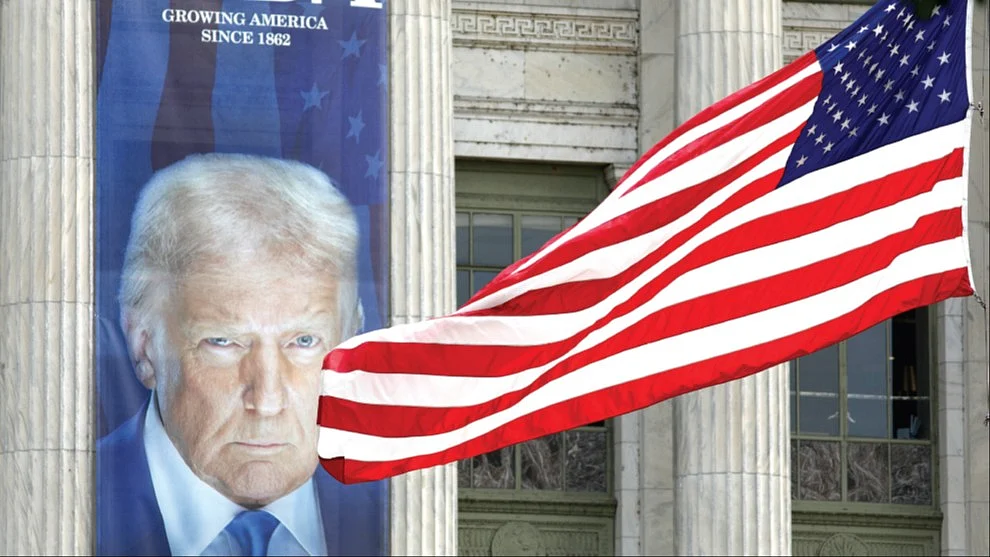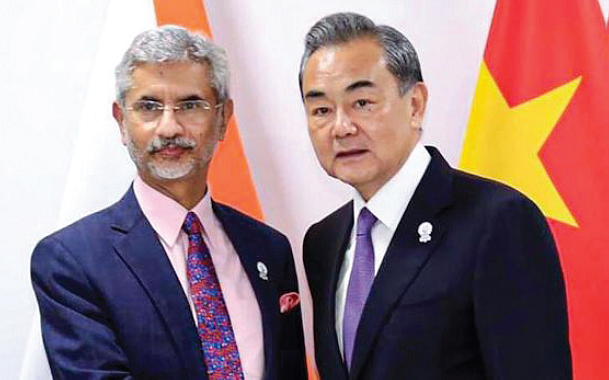India diplomatic antics land it between a rock and a hard place
Will India be exempt from Trump’s most recent warnings of vengeance? Meanwhile, it is in the pitiable situation of pleading with a hostile nation (China) to renew investments

During Donald Trump’s first term as president of the United States, countries with high trade volumes with America woke up to the danger he posed. They began diversifying their exports so as not to be undone by his caprices. The Narendra Modi government in India remained in hibernation, enamoured by the businessman in the White House and suffering from the misguided notion that Modi had won him over.
Modi and the Indian foreign policy establishment misread Trump and failed to recognise that Trump was all about himself—he was no-one’s friend. As Trump told the BBC in an interview (15 July 2025), "I trust almost nobody." Unsurprisingly, India is facing a Trumpian tariff onslaught, with enhanced duty on Indian exports to the US increasingly appearing unavoidable.
India attempted desperately to meet the 9 July deadline imposed by Trump for a bilateral trade agreement, but failed. In fact, even before Modi visited Washington in February 2025, India announced sweeteners—lowering import tariffs on several goods the American president was agitated about, such as motorcycles—but to no avail.
Accepting Trump’s antagonistic terms would cause incalculable damage to India’s agricultural and dairy sectors. Even the Indian automotive industry would be affected. The Modi dispensation is now chasing an undeclared 1 August cut-off date to conclude a preliminary deal, delaying an overall resolution.
This last week, Trump told reporters once again: “We’re going to have access into India.” Describing the Indonesian president, Prabowo Subianto, as “a great president”, who had “opened up the entire country to trade with the United States” Trump concluded: “I think something similar would happen with India.”
So, will India be exempt from Trump’s most recent warnings of vengeance? He vowed to slap 50 per cent duty on BRICS member states and 100 per cent tariff on countries importing oil or gas from Russia. India falls foul on both categories. In today’s US administration, the President’s is not just the last word, it’s the only word. Given however that his approach oscillates between the carrot and the stick, his ultimate decision is anybody’s guess.
The hope is, though, that Trump’s wrath will stop short of a complete annihilation of the international trading order and with it, America’s internal economy, where inflation could spike more rapidly once the stockpile of imports is exhausted. Americans are unlikely to countenance inflation. The US Consumer Price Index rose 2.7 per cent in June from a year ago, up from 2.4 per cent in May. <Politico> reported the business community as being concerned that ‘trade uncertainty was having deleterious effects on the broader economy’.
Modi’s substitution of honest multi-alignment with stealthy alignment with Washington has boomeranged. Russia—once India’s ‘friend in need’—has turned into a transactional partner. It has radically repaired its relationship with China; and even established an equation with Pakistan.

Down on one’s knees in Beijing?
Reuters revealed that the value of India’s merchandise exports in June ‘slipped to a seven-month low’, with the trade deficit for the month standing at US$18.78 billion. The Indian trade secretary, Sunil Barthwal, said exports “were affected by a fall in crude oil prices”. Has refining energy become the backbone of India’s exports? What about IT services, pharmaceuticals, automobiles, machinery?
In the current financial year, India’s trade deficit with China will be in excess of US$100 billion, with no certainty about obtaining rare earth minerals, crucial for its car manufacturing, home appliances, clean energy sector and fertilisers. Besides, India is pleading for renewed investment from a virtual enemy entity. It signifies a helplessness unknown in Indian foreign policy history.
Since June 2020, China occupies at least 2,000 square kilometres of eastern Ladakh, previously de facto recognised as being on the Indian side of the Line of Actual Control between the two countries. Late last year, the two sides papered over the cracks, without restoring a <status quo ante>. In this quite critical state of affairs, New Delhi did not receive the solidarity it expected from the US on the basis of its tilt towards it since 2014.
Beijing has also become more assertive in its claims on the Indian state of Arunachal Pradesh, which it calls Southern Tibet. As for Tibet’s former leader, the Dalai Lama, who has been exiled in India since 1959, the Chinese government’s attitude towards him is quite irrational and intemperate. India’s weakness emboldens China to up the ante on this issue as well.
The vice chief of the Indian Army complained that China was meeting ‘81 per cent’ of Pakistan’s defence requirements; and that India had to combat on two fronts, maybe three (meaning Turkey), during its four-day hostilities with Pakistan in May. He seems to have forgotten that India is the biggest importer of military hardware in the world and that the fighter planes the Indian Air Force employed in the conflict were either made in Russia or France or manufactured under licence in India—not to mention the Russian-origin Indian air defence system.
Such is India’s acute difficulty that the Indian external affairs minister, Subrahmanyam Jaishankar, proceeded to Beijing ahead of a Shanghai Cooperation Organisation (SCO) foreign ministers’ meeting to hold bilateral talks with the Chinese leadership. Instead of standing firm, he was down on his knees, reasoning with an implacable foe who poses the greatest threat to India's security and sovereignty.
According to a read-out posted by the Indian ministry of external affairs, Jaishankar, in his exchanges with the Chinese foreign minister, Wang Yi, asked for ‘peace and tranquillity on the border’ and ‘hydrological data’ from the Chinese side. He also flagged the matter of ‘restrictive trade measures’, which was seen as a reference to the suspension of rare earth exports by China.
Crucially, while imports from the US increase, there is no prospect of enlarging Indian exports to China. What’s worse, Beijing, pressured by Trump’s tariffs, is seeking to dump goods on India. Doklam and Ladakh notwithstanding, Modi has inexorably yielded before a muscular Chinese approach.
Where’s India on Gaza?
On 15–16 July, the Hague Group, comprising eight developing countries co-chaired by South Africa and Colombia, met at Bogota to seek support from other nations to concretise ‘legal and diplomatic measures’ against Israel for its ongoing genocide in Gaza. China, Spain, Norway and Portugal were among those who responded to the call; so were Bangladesh and Pakistan. Astonishingly (or perhaps not) India was absent. New Delhi’s tacit support for the Benjamin Netanyahu government is a blight on its hitherto pristine advocacy of justice in West Asia.
The Constitution of the Hague Group is the culmination of efforts by Francesca Albanese, the United Nations Special Rapporteur on the Occupied Palestinian Territories (land unlawfully annexed by Israel in violation of the 1948 UN award). Predictably, the US has sanctioned Albanese as it did in the case of International Criminal Court judges demanding Netanyahu be brought to justice as an accused war criminal.
Addressing the conference, Albanese stated, ‘Israel is responsible for one of the cruellest genocides in modern history. For too long, international law has been treated as optional—applied selectively to those perceived as weak, ignored by those acting as the powerful.’
Colombian president, Gustavo Petro, wrote in the UK’s Guardian, ‘For the billions of people in the Global South who rely on international law for protection, the stakes could not be higher.’
India, once the principled leader of the progressive world, was nowhere to be seen, or heard.
Follow us on: Facebook, Twitter, Google News, Instagram
Join our official telegram channel (@nationalherald) and stay updated with the latest headlines
